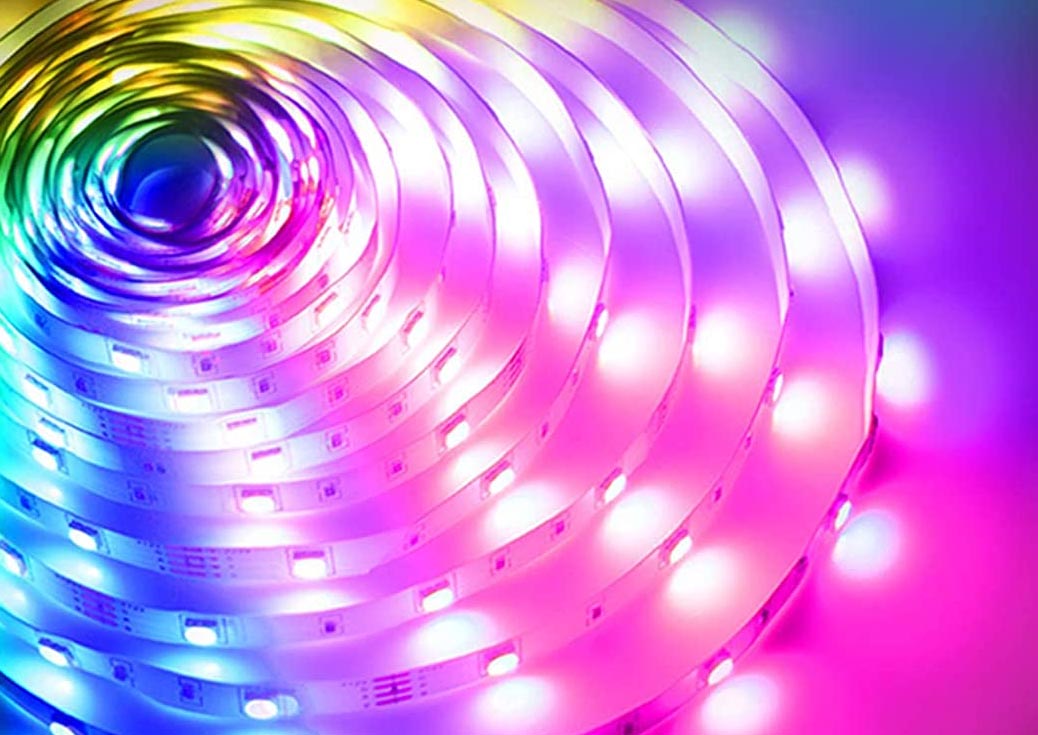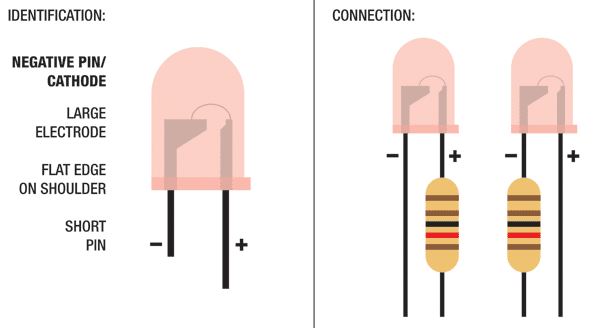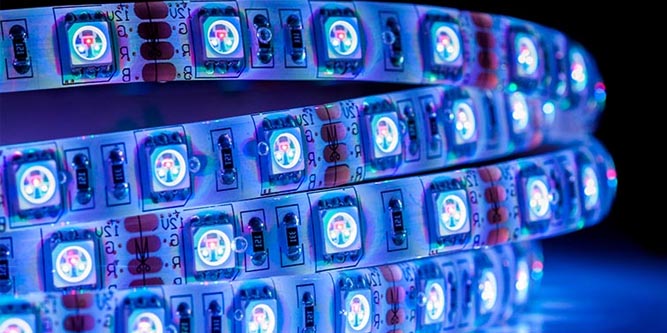Whether you’re an experienced tech-enthusiast or an average layman, figuring out LED terminology can be a bit overwhelming. If you’ve made the commitment to learn a bit more about LED lights and how they work or you’re simply familiarizing yourself with their characteristics, you may have heard about LED anodes vs. cathodes. These terms directly relate to LED polarity and how the technology actually works. Although the vocabulary may seem a bit foreign, understanding anodes vs. cathodes is actually less complicated than it seems.
What Exactly is an LED?
LED stands for light emitting diode. Although this kind of technology has existed since the early 1960’s, LEDs are now widely used in our daily lives. In fact, LEDs are typically seen as the “gold standard” in terms of lighting choices. Often times, you’ll see them being used for light bulbs, string lights, televisions, laptops, monitors and virtually every other electronic device under the sun.
LEDs are known as a semiconductor light source. In general, this is a term used for lighting that’s only possible with a current flowing through it. We like to think of them as a tiny light bulb containing multiple diodes with a consistently flowing electrical current. As a result of this current, light is emitted.
Diodes are simply a term for a component (semiconductor) that allows the flow or current in one direction. In addition, they restrict any current flowing in the opposite direction. They’re also widely known as rectifiers due to the fact that they change AC current into pulsating DC current.

Reasons LEDs are Preferred
Over the past decade, LEDs have taken over the consumer market by storm; and for good reason. Incandescent and Compact Fluorescent Lighting (CFL) are now often seen as a relic from the past. Here are a few reasons why consumers are now using LEDs over any other form of light source.
- Size – LEDs are typically only a few millimeters wide. Simply put, they’re tiny. Since they’re much smaller than any other form of light, there are more useful applications for them.
- Light Direction – While other light sources emit light in every direction, LEDs only emit in one direction. This direction can be specified based on how the manufacturer designs them.
- Energy Efficiency – It’s mostly common knowledge that LEDs consume a fraction of energy that their counterparts do. The energy savings they deliver is typically always more cost-effective in the long term.
- Lack of Heat – When LEDs produce electrical energy, only a slight amount of heat is produced and most of it isn’t noticeable. This is a major benefit when directly compared to incandescent lighting where over 90% of their energy is released through heat.
- Lifespan – Although LEDs may initially cost a bit more, they’ll always outlast other light sources. Most LEDs are rated for a 50,000 hour lifespan whereas fluorescent or incandescent lighting is lucky to get near 10,000 hours.
What is Polarity?
When polarity is referred to in regards to LEDs, it’s related to the flow of electricity. As we discussed earlier, with LEDs, electrical current flows in one-direction. Since this is the case, it’s crucial to know and understand the direction that it’s moving. In general, which way is the current entering and where is it exiting?
What are Anodes and Cathodes?
Every electrical component requires positive and negative terminals in order to complete a circuit. With LEDs, these positive terminals are referred to as anodes. On the contrary, the negative terminals are referred to as cathodes. Electricity enters through the positive side (anode) and exists through the negative side (cathode). Simply put, every LED has an anode and a cathode and when the current flows unidirectionally through it, light is emitted as a result.

A cathode attracts a positive charge, also known as a cation. Although it attracts positive charges, the electrode is actually negatively charged. As a result, a cathode assists in generating electrons that create a charge which ultimately moves the current from cathode to anode. An anode attracts a negative charge, but it’s actually a positively charged electrode. Acting as a electron acceptor, it’s where oxidation occurs in order to attract this negative charge.
When you’re dealing with LED and their polarity, it’s crucial to know which terminal is the anode and which is the cathode. If not, the LED won’t function.
Determining LED Anodes vs Cathodes: How to Identify
While we now know that an anode is the positive terminal and the cathode is the negative terminal, how do you determine the difference between the two? Although it’s dependent on the precise manufacturer, make or model of the diode you’re using, there’s a few indicators to be aware of.
- Typically, diodes have a small line between the cathode pin which directly correlates with a small vertical line within the circuit symbol. It may be barely visible, but it indicates the separate terminals.
- There will be two pins for each diode. Typically, the longer pin indicates that it’s the anode while the shorter pin is the cathode.
- Sometimes, these small pins will be the same length. Whether they were manually cut or manufactured that way, take close examination at the edge of the outer casing. You’ll notice that one side is flat and lined up with the diode. The other side will extend ever so slightly. As a result, the pin that’s nearest to the flat edge will be the cathode.
- Using a multimeter is a fool-proof way to determine the anode vs cathode. Activate your multimeter’s diode setting and use the probes on each pin. Once the diode lights up, you’ll successfully know which is the anode and which is the cathode.

LED Anodes vs Cathodes: General Differences
- The anode is where electricity moves into the diode, while the cathode is where the current flows out in the other direction.
- The anode is referred to as the positive terminal; the cathode is referred to as the negative terminal.
- The cathode plays the role of an electron acceptor. The anode is a direct opposite, acting as the donor.
- Within the anode, oxidation occurs. Within the cathode, reduction occurs.

Final Thoughts
Although LED terminology can be a bit confusing, we hope that we’ve made understanding them a bit more clear. In general, cathodes and anodes are two opposite points within an electrode. In layman’s terms, anode = positive and cathode = negative. Keep this in mind when you’re questioning the difference between the two and the functionality they carry.
LEDs are a semiconductor light source that are widely used in today’s world. Available in countless variations and millions of colors, they’re cost-effective, energy-saving and long lasting. While they may the best available light source, the technology behind them is indeed fascinating. As years go on, it’s hard to imagine anything else taking place of LEDs. However, if the past has taught us anything, the future of electronics is extremely difficult to predict.
Meet Ry, “TechGuru,” a 36-year-old technology enthusiast with a deep passion for tech innovations. With extensive experience, he specializes in gaming hardware and software, and has expertise in gadgets, custom PCs, and audio.
Besides writing about tech and reviewing new products, he enjoys traveling, hiking, and photography. Committed to keeping up with the latest industry trends, he aims to guide readers in making informed tech decisions.

